What to do if all your bees die, according to Roman mythology
These small paragons of cosmic order and harmony have a rich history in literature, art, and material culture
Welcome to this week’s edition of Reading Art!
In Book 4 the Georgics, a lengthy composition on various agricultural topics, famous Roman poet Virgil devotes his attention to “the celestial gift of honey” (mellis caelestia dona, 4.1), and more importantly to the providers of this divine gift: bees. In much of the remaining book, he goes on to detail the many wondrous traits of these amazing creatures: their industriousness, their order, their productivity, and their (seeming) ability to self-procreate.
He thought that they exemplified an ideal society all harmoniously working together to be productive, under the watchful eye of a king bee. I’m sure he would have been surprised to learn that the king is actually the queen, but I digress.
Virgil is perhaps best known for composing the epic poem the Aeneid, the tale of the great hero Aeneas’ escape from the ruins of Troy and his adventures to Italy, where he eventually became king of the region that would one day become Rome. But he had other interests as well, particularly the joys of the pastoral (some might say cottagecore) lifestyle.
In today’s newsletter, we’ll look at some depictions of bees in Roman literature and art, and then move to some other examples from other ancient cultures. As it turns out, bees are a symbol of divine abundance and cosmic order for cultures across the world.
Some Historical Context for Virgil’s Love of Bees
The first century CE was, in general, a difficult time for the Romans (as were many periods in their long history). Julius Caesar rose to power and was then assassinated by his own senators, paving the way for his adopted son, Octavian, to rise to power after teaming up with Marcus Antonius, one of Julius Caesar’s supporters. In time, relations between Antony and Octavian soured, and a bloody civil war erupted, resulting in the death of many Roman citizens in something called the Proscriptions, which is when the government basically endorses the widespread murder of its political enemies. Eventually, Octavian won and changed his name to Augustus—specifically, Caesar Augustus, establishing himself as the Roman princeps, not a king (the Romans hated kings) but rather the “first among equals.” In actuality, though, he was the first Roman emperor.
Augustus was vastly wealthy due in part to his inheritance from Julius Caesar, whom the Romans seemed to regret killing off as soon as it had happened, and in part due to Augustus’ own military and political endeavors. A sponsor of extensive public works, he allegedly claimed to have found a Roman made of bricks and to have turned it into a Rome made of marble.
Augustus was also a patron of the arts, and literature and art flourished during what we call the Augustan period of Rome. This was the time of authors such as the historian Livy, the love poets Propertius, Tibullus, and Ovid, the epic poet Virgil, and more. In many ways, these works glorify Rome as a growing empire and global power. And yet, the dark cloud of the bloody civil war hung over Rome even years after it ended. Augustus’ reign of peace was bought with bloodshed.
What does any of this have to do with bees?
Well, some have read the work of authors such as Virgil with an eye to political subtext. Namely, that the increase in works that celebrate societal cohesion and harmony were a direct response to the turmoil of the times. In a world beset by constant political violence and civil war, works like the Georgics offered comfort and advice for cultivating a prosperous life.
What To Do When Your Bees All Die
Toward the end of Book 4, Virgil turns from the practical to the mythological, relating the tale of one Aristaeus, a minor divinity who was the son of Cyrene, a river nymph, and Apollo. Aristaeus was associated with farming and agriculture and, according to Virgil’s tale, he was also the first beekeeper.
One day, Aristaeus’ bees all mysteriously died of an illness. After consulting both his mother and the slippery sea god Proteus, who knows a lot about everything, it turned out that Aristaeus was cursed because of the Orpheus and Eurydice debacle. In this version of events, Eurydice was a nymph who lived in the grove where Aristaeus kept his bees. When Eurydice died from a snakebite in the area, the nymphs (for reasons not totally clear to me) cursed Aristaeus’ bees.
Aristaeus finally learns how he can placate the grieving/angry nymphs and break the curse to regenerate his bees (Georgics 4.535ff., trans. A.S. Kline):
Choose four bulls of outstanding physique,
that graze on your summits of green Lycaeus,
and as many heifers, with necks free of the yoke.
Set up four altars for them by the high shrines of the goddesses,
and drain the sacred blood from their throats
leaving the bodies of the steers in the leafy grove.
Then when the ninth dawn shows her light
send funeral gifts of Lethean poppies to Orpheus,
and sacrifice a black ewe, and revisit the grove:
worship Eurydice, placate her with the death of a calf.
There you have it! An easy do-it-yourself ritual to make your bees come back to life again.
Just as honey is thought of as a gift from the gods, bees appear on many objects as symbols of the divine. Take, for example, this Roman cult statue of Artemis from her temple at Ephesus in what is now Turkey, from some 100-200 years after Virgil’s time:
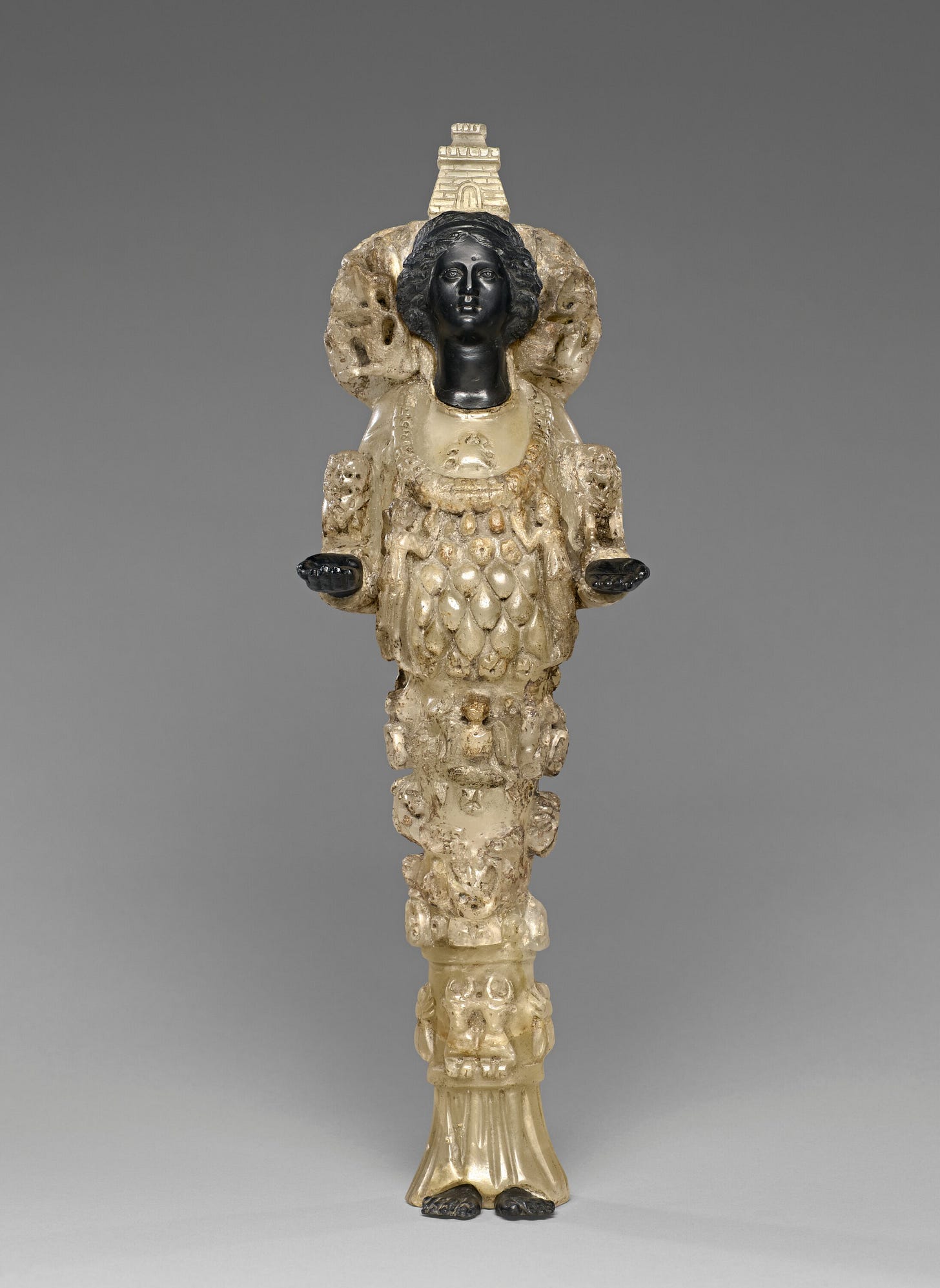
Artemis was the goddess of hunting and the wild, and she often appears with animals—but often those she is hunting, or her hunting hounds. Here we see her with smaller animals adorning her body, and specifically bees. Although famously a maiden goddess, she was also associated with fertility and birth, and the bees symbolize this natural state of abundance that she embodied.
The Fascination with Bees in Other Ancient Cultures
But Virgil certainly didn’t invent this association between divinity and bees. In fact, the Greeks also viewed them in this way. Take, for example, these gold plaques with a bee motif across them, from the 600s BCE:
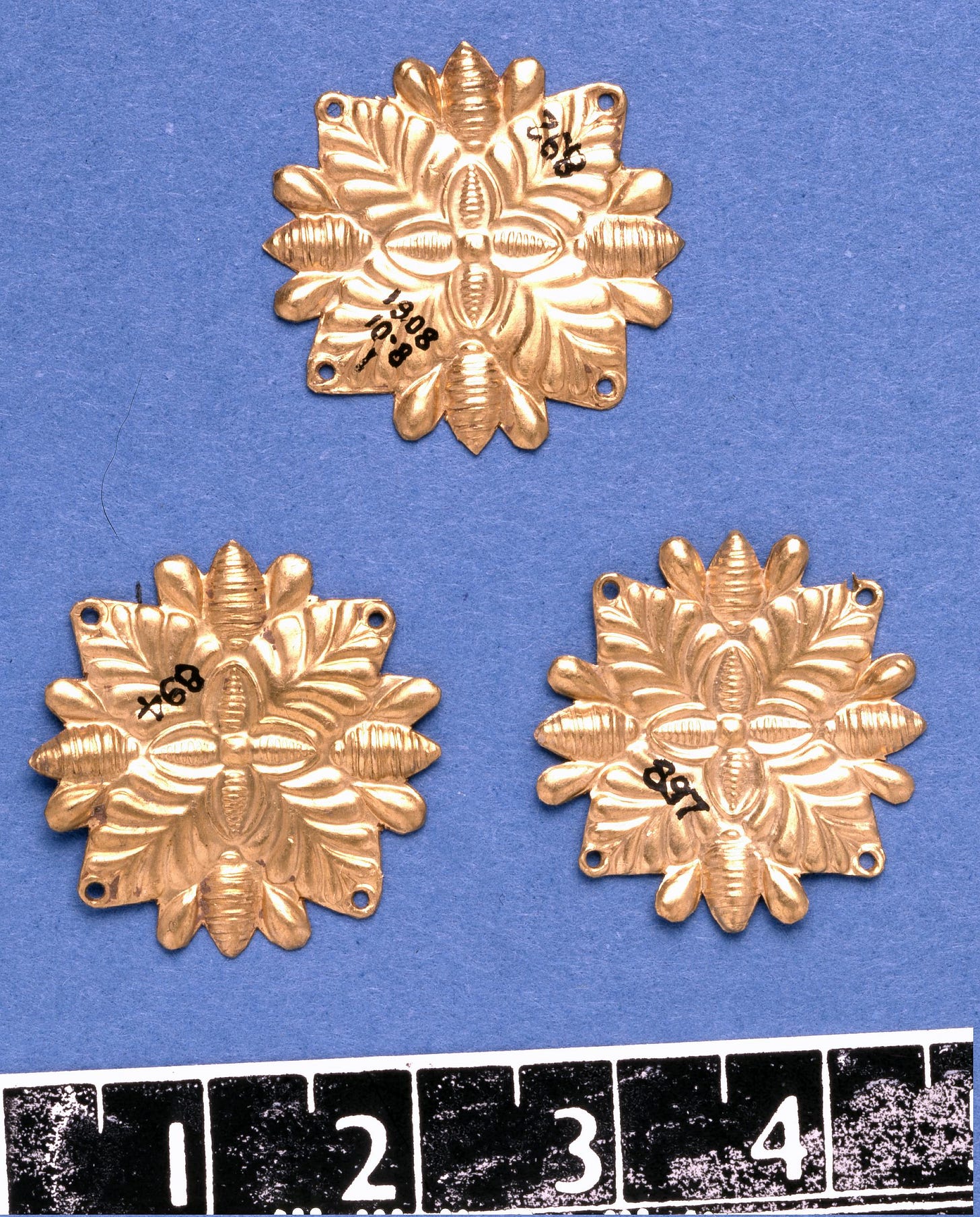
These were also found in Ephesus at a temple of Artemis, interestingly enough. It’s not exactly that they’re like a true attribute for this goddess specifically, but bees tend to show up in contexts in which the bounty that the divine affords to humans needs to be signaled or celebrated.
A slightly less ancient example from the Greeks is this ritual bowl called a phiale, used for pouring out libations, which is when you pour some wine onto the ground or onto an altar as an offering for the deities you want to supplicate:
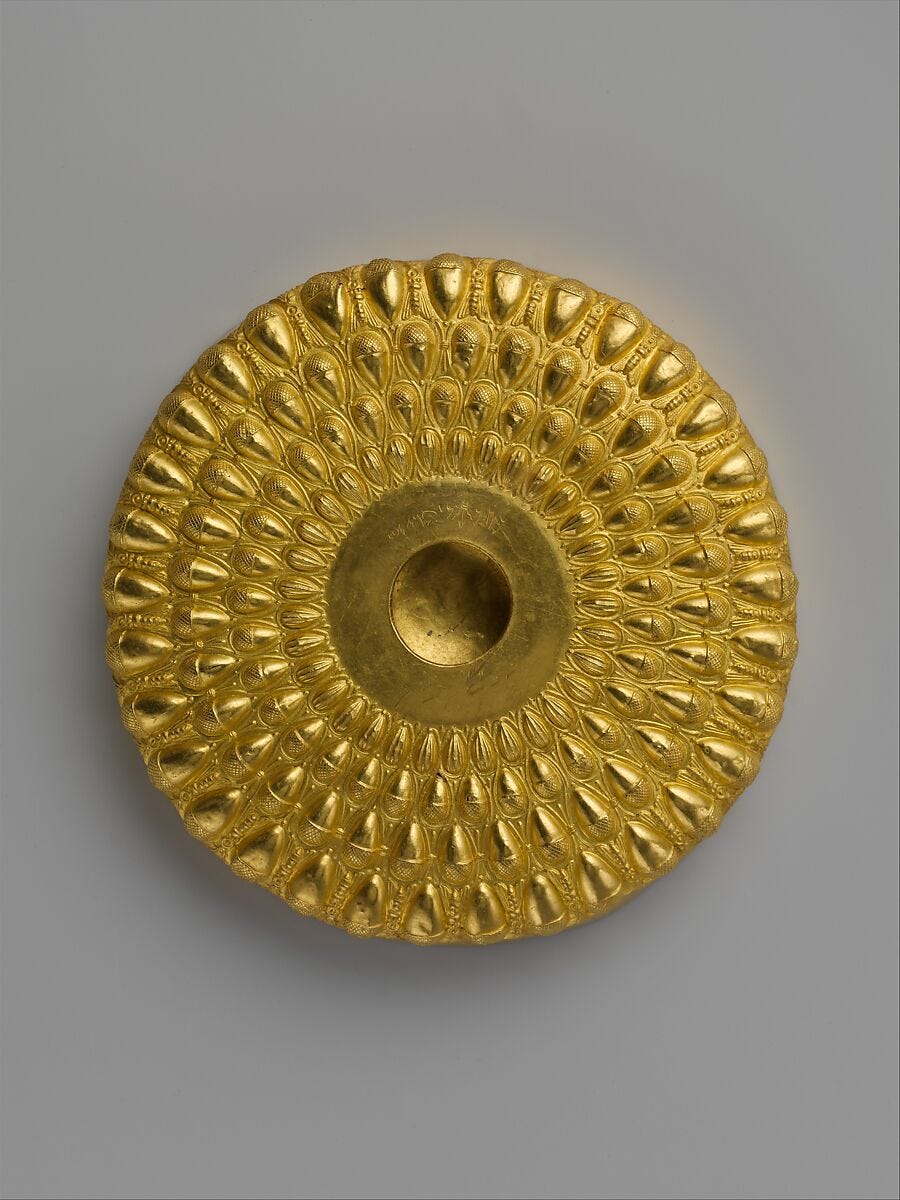
The spiral motif is reminiscent of the order of a beehive, one of the examples of the natural world creating the cohesion and harmony that humans find so difficult to make for themselves. This bowl also has acorns on it, a symbol of the capability of something large to grow from something very small.
Bees are some of the earliest animals portrayed in art and material culture, it seems. Take, for example, this bee amulet from Egypt’s Early Middle Kingdom, around 2000 BCE:
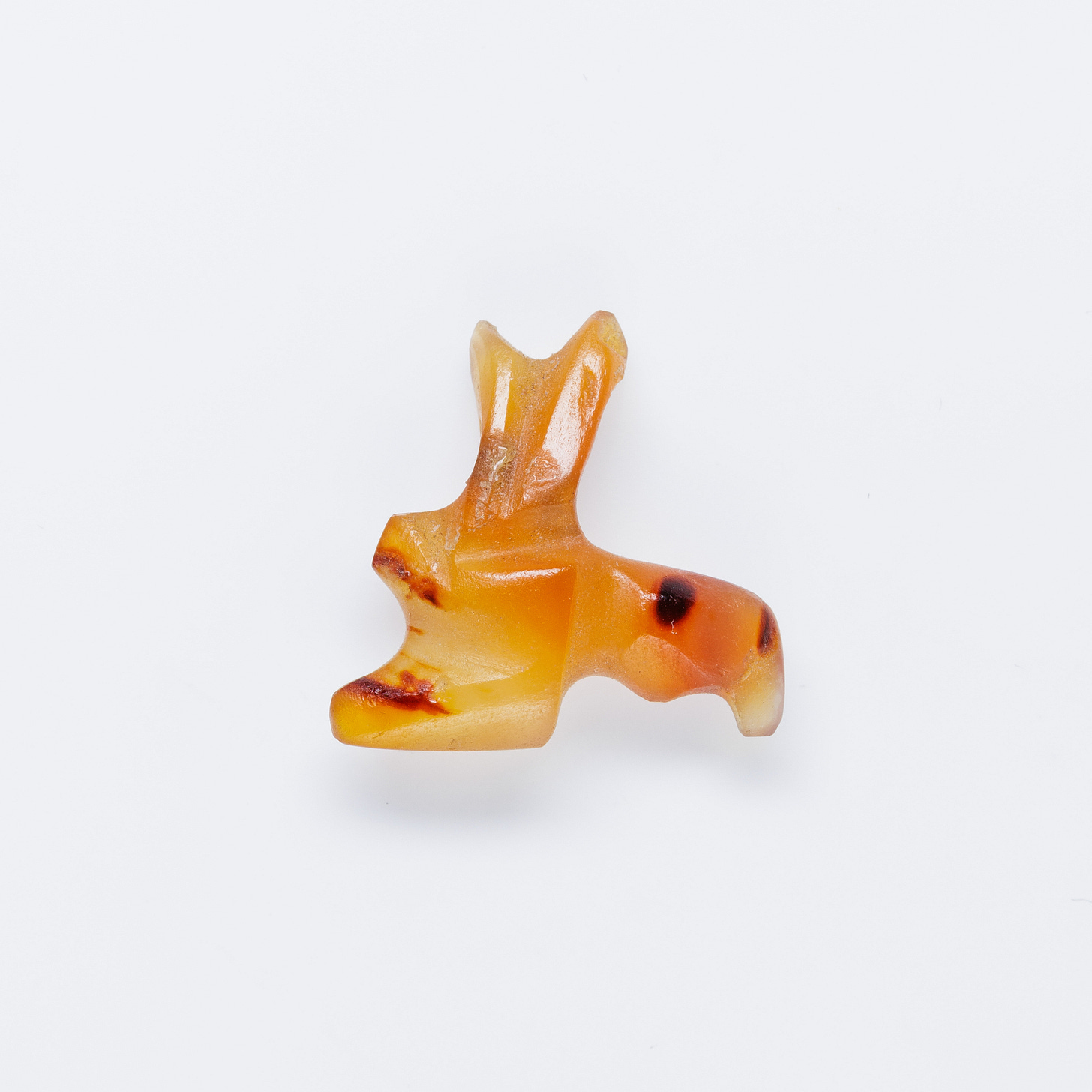
The carnelian, a stone with a natural orange-red luster, mimics the bee’s natural color. Amulets with animals on them often are meant to bring protection and prosperity to the wearer. In this instance, the wearer might hope for abundance or sweetness to materialize in their life, just like bees materialize honey.
The Egyptians viewed bees as sacred and even divine; as the myth goes, the tears of the chief god Re turned into the first bees. The goddess Neith, who presided over warfare and (note the parallel to Artemis) motherhood, had a temple that was called the House of the Bee. According to ancient Egyptian texts, the goddess Nut, who presided over the cosmos and the heavenly bodies, sometimes appears as a bee. On a more human level, bees were associated with the royal family, who were themselves considered divine.
Far across the ocean, the peoples of South America also practiced beekeeping, revering bees in a way similar to the Mediterranean cultures discussed above.
Most beekeeping is attested among the Mayans and Aztecs, who used the honey in religious rituals, another example of associating bees with the divine. So this artifact from the Moche people of ancient Peru particularly interesting, because bee fandom is not as well attested among the Moche:
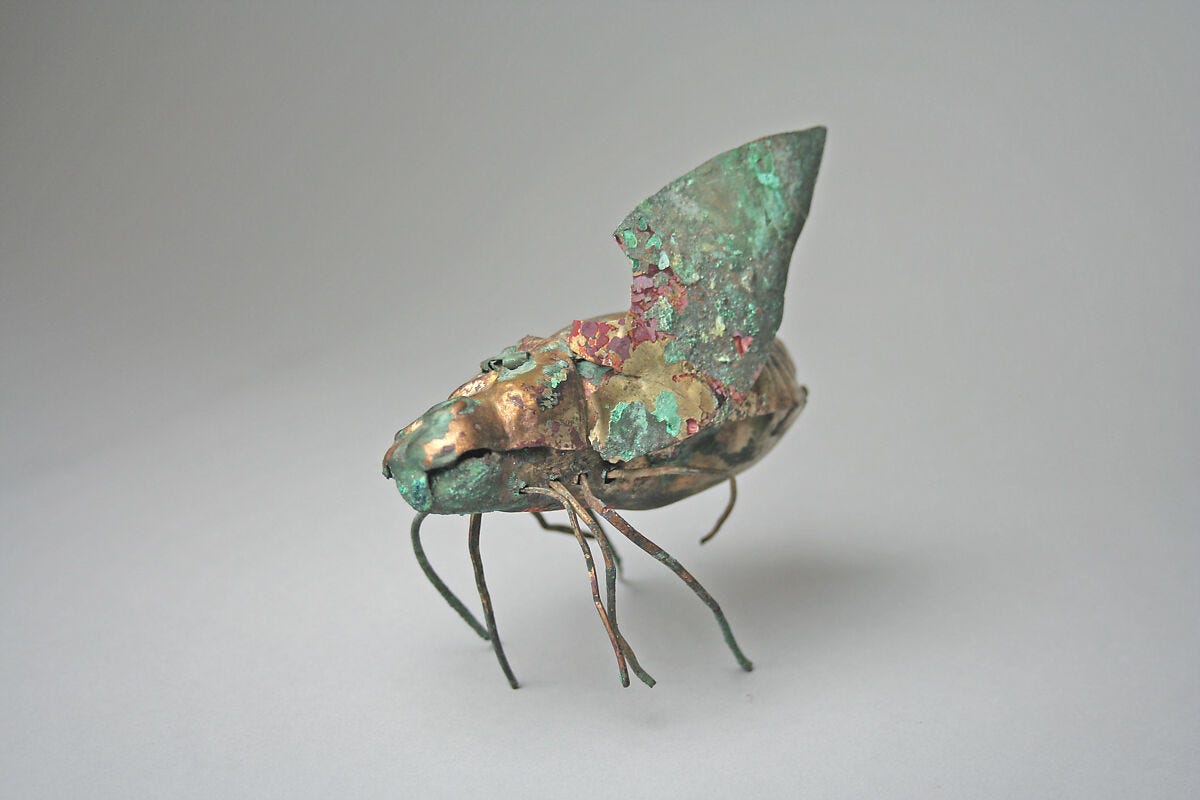
It reminds me of the bee amulet from Egypt, in a way, although this example is made of metal and not of stone. It’s actually made of gilded copper, which suggests that it was a luxury item for a person of status. I’m not entirely sure of the original context, but it may have been at least a reminder of divine power. Or perhaps it was a ritual object of sorts, to be identified with a specific deity.
Bees have also been used to signal human power, as in the famous case of the Barberini family, a wealthy and powerful clan who lived in Rome. Strikingly, their family crest is an image of three bees.
As the myth goes, one of the Barberini children fell ill. No doctor could help him, and things were getting dire. Thankfully, a beekeeper brought him some honey and bee venom, healing the sickness completely.
The Barberinis probably also liked bees because of their associations with abundance, prosperity, harmony, and industriousness, as with the ancient cultures we spent most of our time on above. In addition, when bees appear in Biblical texts, they are frequently associated with divinity and the triumph of good over evil.

As you can see, the bees of the Barberini family are quite prominent in Rome, in this example and in numerous others from Roman architecture and art. Virgil would have approved!
Thank you for reading this week’s newsletter!
A simpler explanation for the ongoing fascination with bees is maybe that honey is delicious, and for civilizations without cane sugar, such as the ancient Greeks and Romans, honey is that much more coveted. At the same time, the strong presence of bees across historical periods and cultures shows the human tendency to look to nature as an example of how to lead the best possible life.
I hope you enjoyed reading! I’d love to hear from you in the comments. Take care until next time.
MKA



